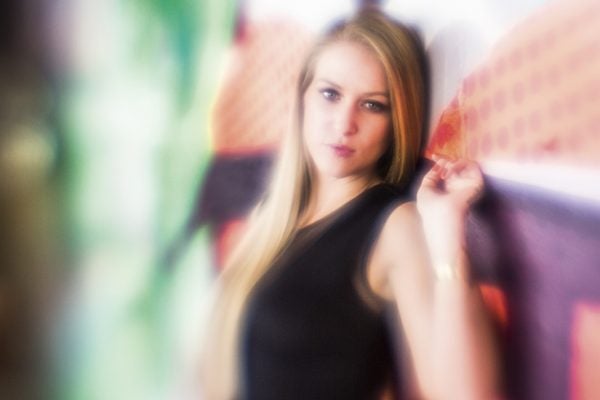Andy Westlake and Michael Topham take a look at a selection of optics that are designed to create attractive, distinctive or unusual blur effects
The term selective focus is used for situations where we’d like to draw our viewer’s eyes towards a specific part of an image. By making a certain area stand out, it helps the viewer understand what we, as photographers, consider to be the heart of the image. There are no rules to say when this technique can or can’t be used, but to pull it off successfully it’s vital that a shallow depth of field is created.
The best lenses for selective focusing are typically those that feature a large aperture (f/2.8 or faster) with a focal length of 50mm or longer. But even with the finest lens fitted to your camera, there’s plenty more to think about than simply dialling in the widest aperture and firing the shutter. After identifying which areas of the image you want to remain pin-sharp and those you’d prefer to be rendered blurred, you’ll want to critically assess your shooting angle and think carefully about composition. The latter has its say on where a viewer’s eyes target your image first and how they are drawn through it.
As already mentioned, there are no rules about when selective focusing can be used, but there are some genres it suits better than others. Portraiture is a popular example, and by experimenting with the distance between your subject and the background using a lens designed to create the most aesthetically pleasing blur, it’s possible to create some mesmerising results. Macro and wildlife are other subjects that can lend themselves to selective focusing, and it’s a technique that can be used in a canny way to discourage viewers from any distractions in the frame that can’t be physically removed from sight.
Here at AP, there’s a constant stream of lenses passing through our hands, some of which are superior to others when it comes to selective focusing. We’ve grouped together some of our favourites, and in the case of the niche examples, we reveal how they differ and can affect the quality of the blur in your images. So if you want to know more about the various options out there, you’ll enjoy reading about these special alternatives.
Canon TS-E 90mm f/2.8
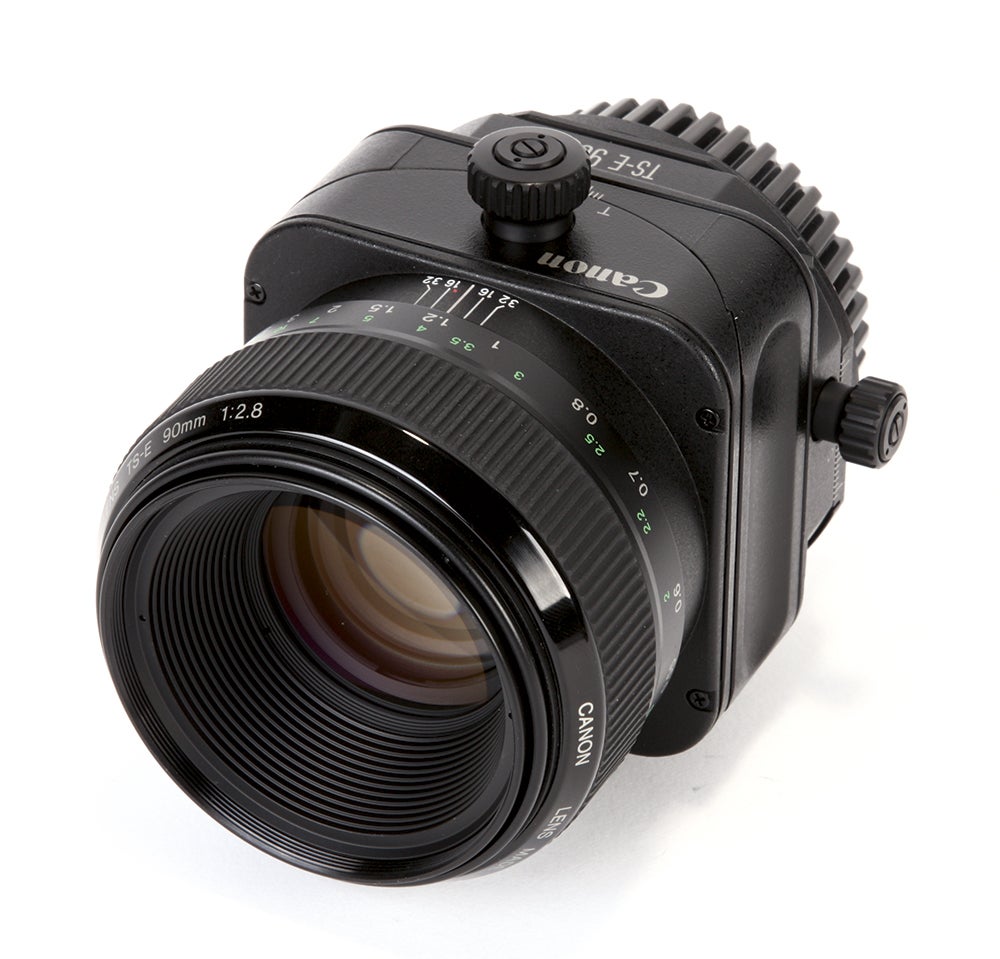 Website: www.canon.co.uk
Website: www.canon.co.uk
Price: £1,124
The TS-E 90mm f/2.8 is one of four tilt-and-shift (TS) lenses in Canon’s line-up, alongside the TS-E 17mm f/4L, TS-E 24mm f/3.5L II and TS-E 45mm f/2.8.
It differs from conventional lenses in the way it offers shift control to compensate for perspective distortions and tilt control to alter the focus plane. By adjusting the tilting mechanism of the lens it’s possible to align the focus plane to the subject, which in some cases may not be parallel to the sensor plane. It’s the same principle that creates the diorama-like miniature effect when shooting distant subjects – you can blur the background and foreground, leaving the middle of an image tack-sharp.
Tilt-and-shift lenses have long been associated with architectural photographers who want to correct converging verticals, but today their use has gravitated to other genres where they’re being used much more creatively. Portraiture is one example where their use has become very popular. By shooting at f/2.8 and tilting the lens, it’s possible to isolate a face from an entire scene and keep it nicely in focus while letting everything else in the frame blur away.
The greatest challenge using a tilt-and-shift lens like the Canon TS-E 90mm f/2.8 is that it’s manual-focus only, which means you’ll need to be extra vigilant of your focusing. You’ll want to take advantage of any manual- focusing aids that your camera may offer to ensure your focus is as sharp as possible.
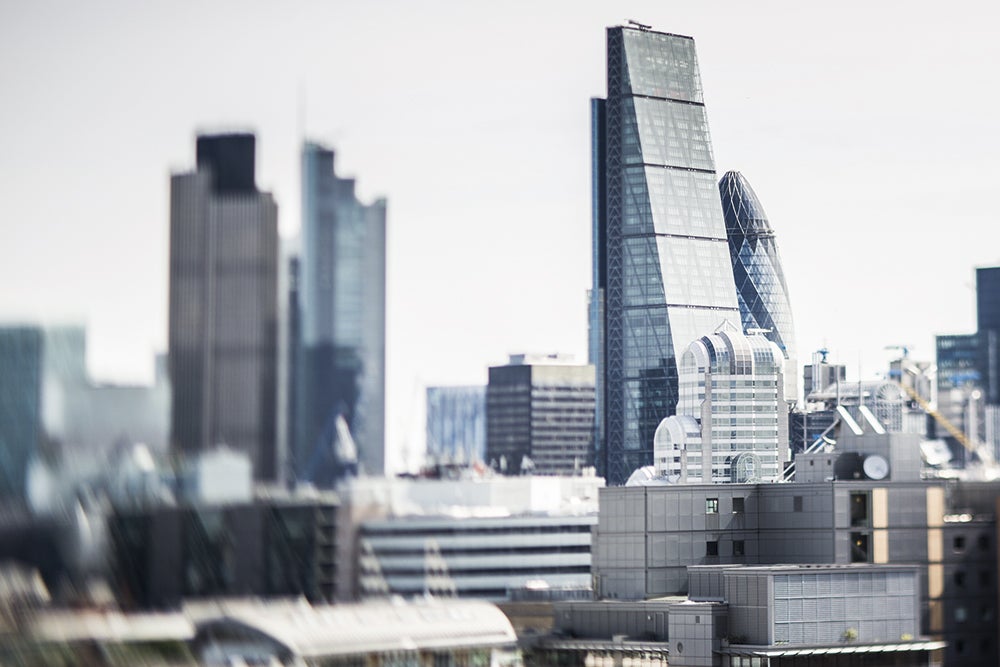
Here the Canon TS-E 90mm f/2.8 was tilted sideways to blur the left and right sides of the image
Fujifilm XF 56mm f/1.2R (APD)
 Website: www.fujifilm.co.uk
Website: www.fujifilm.co.uk
Price: £679.99, £875 APD version
Despite the domination of the APS-C sensor size for the past 15 years, very few specialist short telephoto portrait lenses have been specifically designed for the format. Instead, most camera manufacturers have been content to let customers buy 50mm f/1.8 or f/1.4 lenses originally intended for use on 35mm film cameras, and therefore based on rather old optical designs. While these can work quite well and have the undeniable advantage of being inexpensive, their classic double-Gauss type optics tend to give marginal image quality at large apertures.
However, one manufacturer that has consistently thought outside the box is Fujifilm. With its X system specifically based around APS-C from the word go, it has delivered lenses that match the intent of the most popular focal lengths for 35mm, rather than just repeating familiar focal lengths. One result of this policy is the XF 56mm f/1.2R – a lovely portrait lens that’s designed to replicate the effect of using an 85mm prime on full frame. More interestingly, the lens is available in two versions. The basic model has the distinction of being one of the fastest autofocus primes available for any CSC system. However the more expensive APD version has an additional trick, with an apodisation filter on board to smoothen the out-of-focus blur at large apertures. This is genuinely nice to have, because while the 56mm is remarkably sharp wide open, it can give quite ‘busy’ bokeh at large apertures in some situations. But otherwise it’s a great little fast prime for X-system owners.
Lomography Petzval
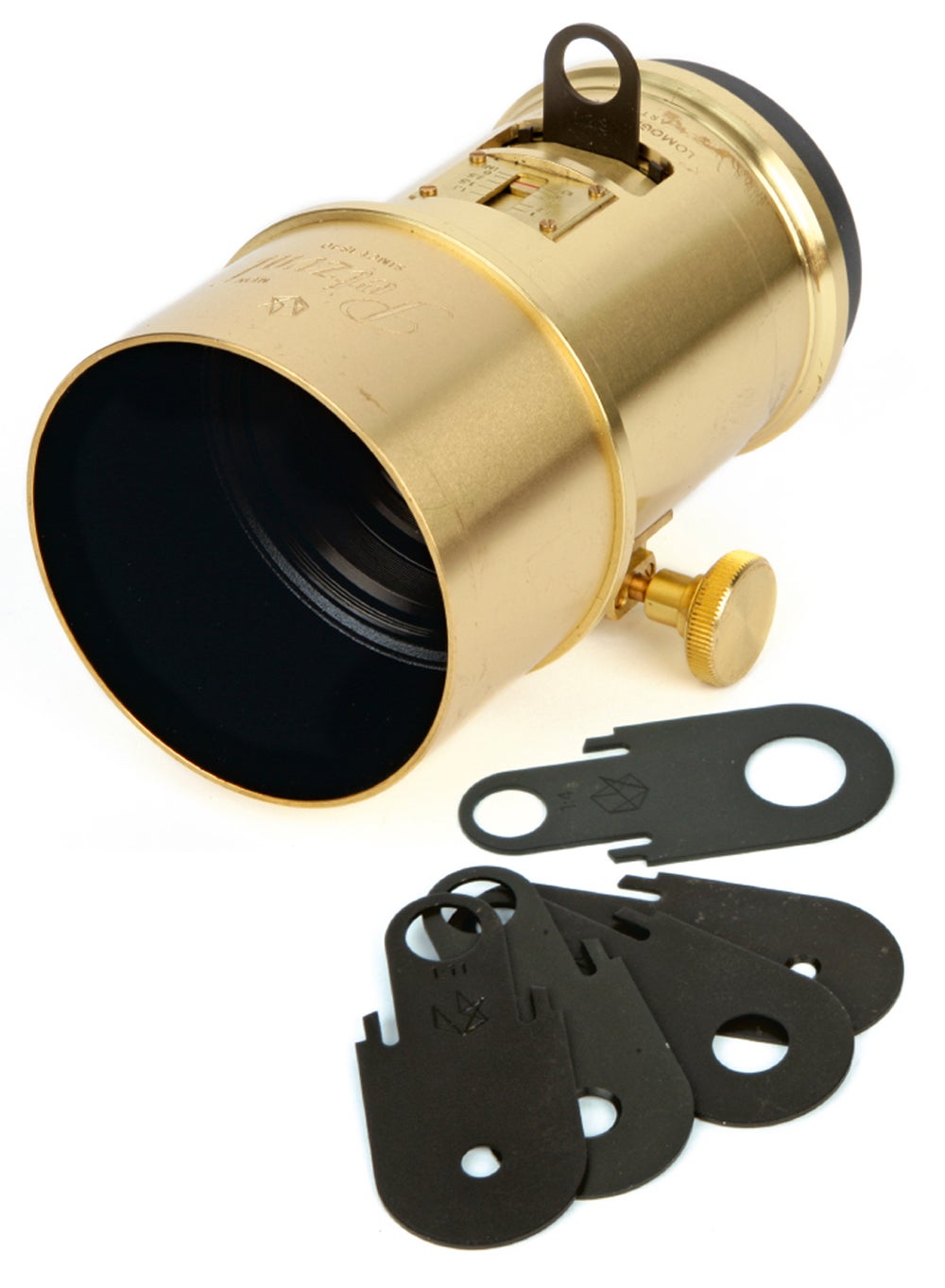 Website: www.lomography.com
Website: www.lomography.com
Price: £459 (85mm), £549 (56mm)
Lomography is a name that’s been synonymous with lo-fi ‘art’ photography ever since the original Lomo LC-A 35mm film camera spawned an entire genre based around spontaneous shooting from the hip. The firm sells a range of quirky film cameras, from the build-it-yourself Konstruktor F 35mm SLR through to the Belair 6×12 120-format folding camera.
Over the past couple of years, though, the company has diversified into the digital realm, making an array of lenses for DSLRs and CSCs based on vintage optical designs. These are exemplified by the Petzval – a recreation of a lens designed in1840 by Joseph Petzval, one of the foremost optical physicists of his time. In its day, this was a revolutionary fast-aperture lens that allowed portraits to be made using exposures measured in seconds rather than minutes. Now, it’s very much a special-effects lens, with a particularly characteristic look to its out-of-focus blur pattern.
With a brass barrel, rack-and-pinion focusing mechanism and drop-in Waterhouse stops for setting the aperture, Lomography has faithfully recreated the original’s design characteristics, although this doesn’t necessarily make it easy to use. Two versions are available – an 85mm and 56mm – with the 56mm being better-suited to APS-C- format cameras. It also has an additional ‘bokeh-control’ ring to manipulate the look of the out-of-focus regions. Both come in Canon or Nikon mount.
The Petzval’s signature optical look is ‘swirly bokeh’. Technically due to a combination of curvature of field and strong vignetting, this can make the background appear to be formed of concentric rings. It’s not for everyone or everyday shooting, but it can be very effective for shooting portraits with a centrally placed subject.
Tamron SP 85mm f/1.8 Di VC USD
 Website: www.tamron.eu/uk
Website: www.tamron.eu/uk
Price: £749
While the rest of the lenses in this article all have some standout optical trick or characteristic, at first sight the Tamron SP 85mm f/1.8 Di VC USD offers nothing of the sort. Yet it’s something of a poster child for modern lens design, because despite its up-to-the-minute optics that provide stunningly sharp images with minimal optical aberrations even when shot wide open at f/1.8, it also provides a consistently gorgeous rendition of out-of- focus areas. This is despite the useful inclusion of optical image stabilisation, which can sometimes have a negative effect on bokeh.
Available for Canon, Nikon and Sony Alpha-mount DSLRs, the 85mm works equally well on both full-frame and APS-C cameras. On the smaller format it offers a 135mm equivalent angle of view, which is towards the long end of the classic ‘portrait’ range. Its nine-bladed diaphragm uses curved blades to give a near-circular aperture, which doubtless contributes to the lovely blurred backgrounds it creates.
At £749 this lens is far from cheap, but it’s very nicely made with moisture-resistant construction. It also has effective image stabilisation and fast, silent autofocus, although serious users will almost certainly benefit from fine-tuning it to their camera using the autofocus micro-adjust feature. Overall, though, any DSLR user looking for a practical short telephoto lens that gives sharp images coupled with attractive out-of-focus blur would do well to put this on their shortlist.
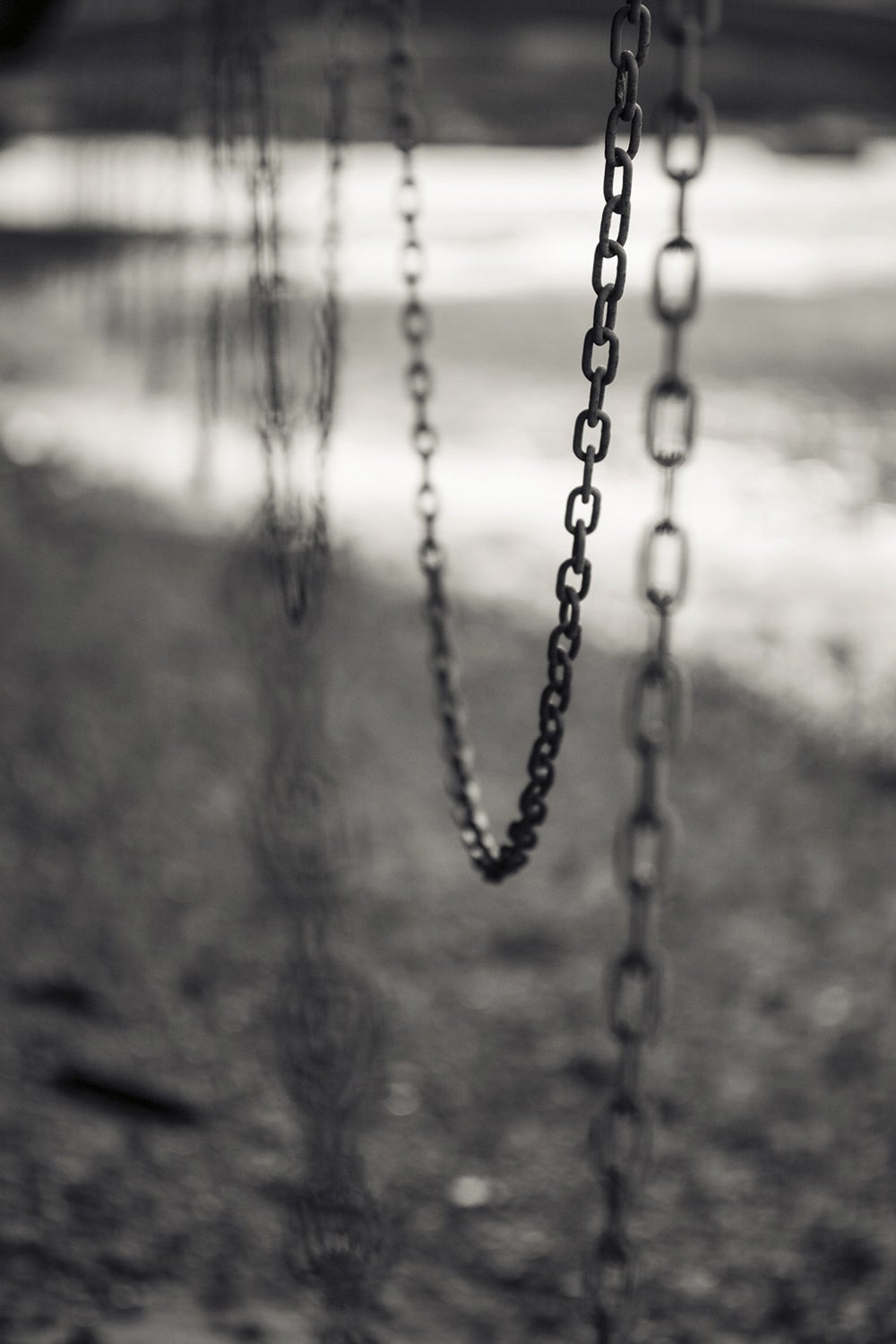
Tamron’s 85mm f/1.8 gives attractive background blur in most situations
Meyer Optik Görlitz Trioplan 100mm f/2.8
 Website: www.meyer-optik-goerlitz.com
Website: www.meyer-optik-goerlitz.com
Price: €1,499 (around £1,250)
Like Lomography, Meyer Optik Görlitz is a company that has started to make reviving, characterful, old lens designs a speciality, with development costs supported through the crowdfunding site Kickstarter. The Trioplan is one of the fruits of that activity, and like the Petzval lens it brings its own unique rendition of out-of-focus backgrounds that some photographers consider to offer a welcome antidote to the perceived sterility of modern computer-aided lens design.
In terms of physical design, the Trioplan could easily pass for a conventional manual-focus prime. It has none of the retro affectations of Lomography’s approach, with a simple cylindrical barrel that includes a large manual-focus ring with distances marked in feet and metres, and an aperture ring towards the front. However, the three-element optics and 15-bladed aperture result in images that look anything but ordinary.
The Trioplan’s speciality is so-called ‘soap-bubble’ bokeh. While photographers classically prefer their out-of-focus highlights to be evenly blurred, smoothing off towards the edges, the Trioplan veers off in almost precisely the opposite direction. Its blur circles are characterised by bright rings around the edges – an effect that draws attention to the defocused areas of the image and, in the right hands, can be used for impressive artistic effect. But again, it’s not to everybody’s taste.
Photographers with, frankly, more money than sense can even buy into a couple of Limited Edition finishes of the Trioplan, with delivery expected in September 2016. The titanium-finished version costs €2,499, and only100 will be made. Meanwhile, the gold-plated Golden Eye will be limited to just 10 units, and costs €3,499. However, this does include the opportunity to personally inspect the final assembly in Hamburg, Germany, making it more of a bargain than it might at first appear.
Samyang 50mm f/1.2 AS UMC CS
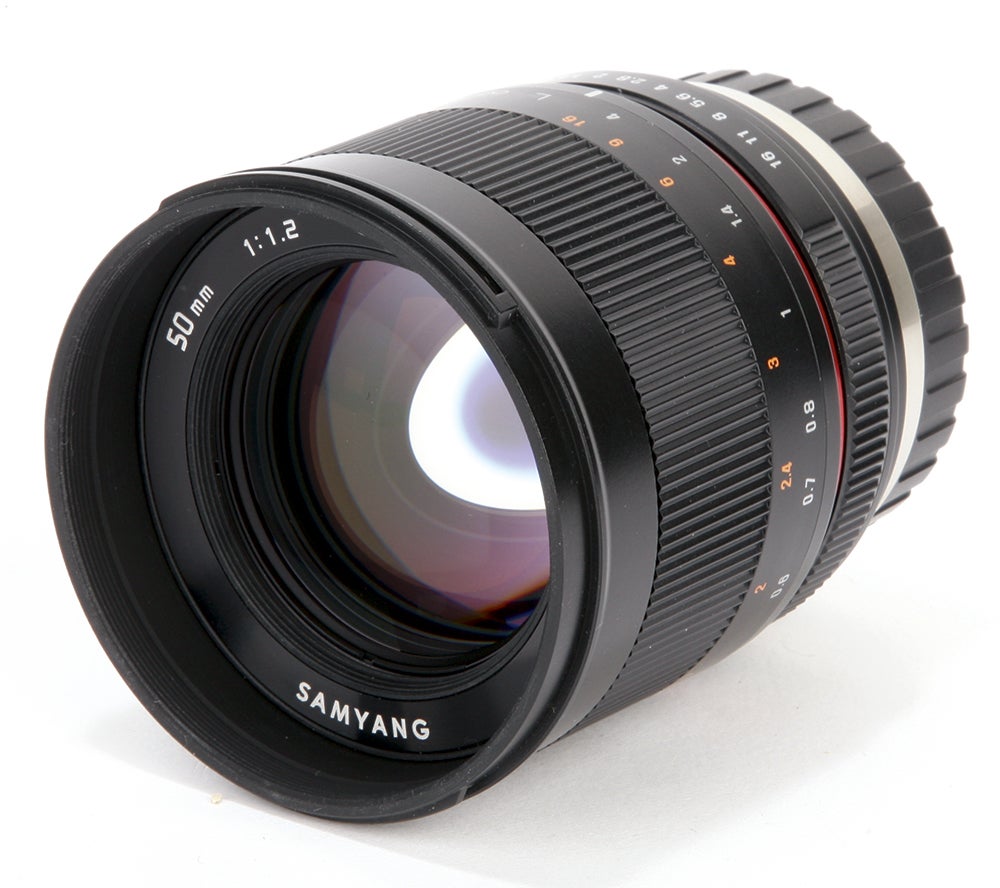 Website: www.syopt.com/en
Website: www.syopt.com/en
Price: £279
You might think that ultra-fast primes would inevitably command prices well beyond the reach of all but the most committed amateurs, but at less than £300, Samyang’s 50mm f/1.2 AS UMC CS tears up the rulebook. The catch is that it’s not for DSLRs or full-frame; instead, it only works with mirrorless compact system cameras that have APS-C or smaller sensors. Accordingly, the lens is available in Sony E, Fujifilm X, Canon EF-M and Micro Four Thirds mounts. To put the price into perspective, Fujifilm’s XF 56mm f/1.2R will set you back at least £400 more.
As usual for Samyang, the lens is manual- focus only, although with the focusing aids now available on most CSCs this isn’t necessarily a huge problem. Using magnified live view or a peaking display, it’s possible to get accurate focus with just a little practice. Of course, there’s always going to be a trade-off between accuracy and speed, so this lens won’t be the best choice for moving subjects.
The nine-bladed circular aperture is also controlled manually using a ring on the lens barrel, and because it stops down directly to the selected setting it gives a full-time preview of the depth of field. Unlike with the optical viewfinder in DSLRs, this gives a completely accurate representation of the shallow depth of field and background blur at large aperture settings (the viewfinder doesn’t go dark at small aperture settings, either).
With an equivalent focal length of 75mm on Sony and Fujifilm cameras, 80mm on Canon EOS M bodies and 100mm on Micro Four Thirds models, the Samyang 50mm f/1.2 is well suited to head-and-shoulder portraits. Indeed, for users of these cameras looking to experiment with shallow depth of field effects and extreme out-of-focus blur, it’s far and away the most economical entry point. We tested it in AP 26 March and were very impressed indeed.
Leica Noctilux-M 50mm f/0.95
 Website: www.leica-storemayfair.co.uk
Website: www.leica-storemayfair.co.uk
Price: £7,800
There are lenses with fast maximum apertures and there’s the Leica Noctilux-M 50mm f/0.95 – one of the world’s fastest aspherical lenses and the successor to the famous Leica Noctilux-M50mm f/1 Asph. What we’re looking at here is a very special lens capable of transmitting more light than most others in the world, and one that’s designed to excel in low light and in environments where the shallowest depth of field is a prerequisite.
Designed for use with Leica M cameras, it has a robust and precision-engineered feel to it. The depth of field is so razor-thin at its maximum aperture that the smallest amount of movement of the camera or your subject is enough to throw what you’d like to appear sharp out of focus. It’s almost impossible to create a pin-sharp shot of a moving subject. Talking from experience, it’s a lens that’s extremely challenging to use handheld, but at the same time is incredibly satisfying when you get it right. You just need to take a lot of shots – and we mean a lot of shots to get one you’re happy with.
The blur it creates in front and behind the plane of focus is rendered very smoothly, but as is typical for very fast primes such as this, background highlights do suffer slightly from bokeh fringing. If you haven’t heard of this term before, it refers to visible haloes of different colours in out-of-focus areas. It’s only obvious at large apertures and stopping down sees it improve considerably. A neutral density (ND) filter is a must-have accessory to create the wide-open look in bright lighting conditions, and the only issue here is that it has a 60mm thread, which isn’t the most common of filter sizes, so you’ll want to look at those produced by Heliopan or B+W.
It’s easy to fall in love with the way the Leica Noctilux-M 50mm f/0.95 renders blur, and it’s a lens that’s very complementary to portraiture, reportage, street and contre-jour photography.
Nikon 105mm f/2D AF DC
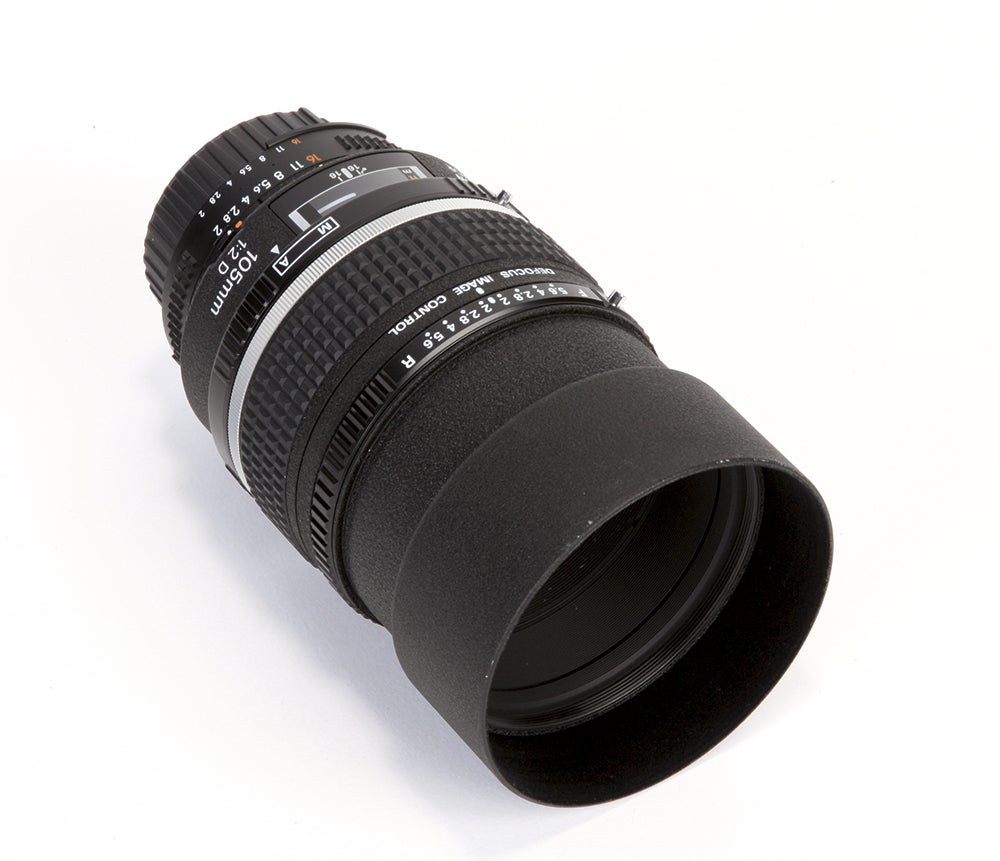 Website: www.nikon.co.uk
Website: www.nikon.co.uk
Price: £799
The Nikon 105mm f/2D AF DC (Defocus Control) is somewhat similar to the Laowa 105mm f/2 Smooth Trans Focus lens (see test on pages 47-49) in that it’s a specialised portrait lens that provides us with the opportunity to control the appearance and nature of out-of-focus elements. Here this is done using the defocus-control ring that’s located towards the front of the lens, which moves the lens elements relative to each other to manipulate spherical aberrations.
As a lens to shoot with it can take some getting used to. The effect of the defocus control on out-of-focus areas is subtle and is most easily seen when the lens is used at its widest aperture settings. Under close scrutiny you’ll notice that when the defocus control is used in its rearward settings, out-of-focus background elements become smoother, but foregrounds become more sharply defined. When the defocus control is used in its forward settings, this effect is reversed. To avoid introducing softness to an image it’s imperative the defocus-control ring is set to a number no smaller than the main aperture.
The lens is liked by Nikon users for the way it renders smooth and creamy bokeh with impressive levels of sharpness at the centre. Users will see an improvement in centre sharpness by stopping the lens down from f/2 to f/2.8, and by f/5.6 you reach the point where it’s as sharp as it gets. There’s the choice of focusing manually or using autofocus, which uses the older body-based mechanical screw arrangement compared to today’s faster AF-S technology that converts ultrasonic waves to drive the focusing action.
It’s getting a bit long in the tooth (released in 1993), but the 105mm f/2D AF DC remains a fine choice for Nikon users even by today’s standards. Nikon also makes a 135mm f/2 version that costs around £1000.
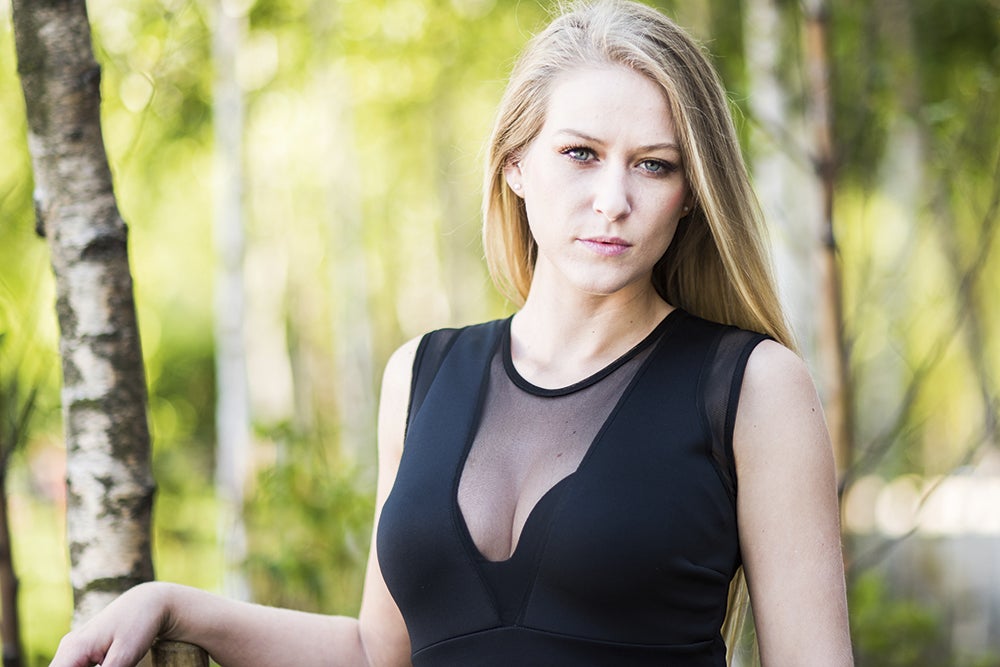
Nikon’s Defocus Control lenses allow manipulation of foreground and background blur
Canon EF 50mm f/1.2L USM
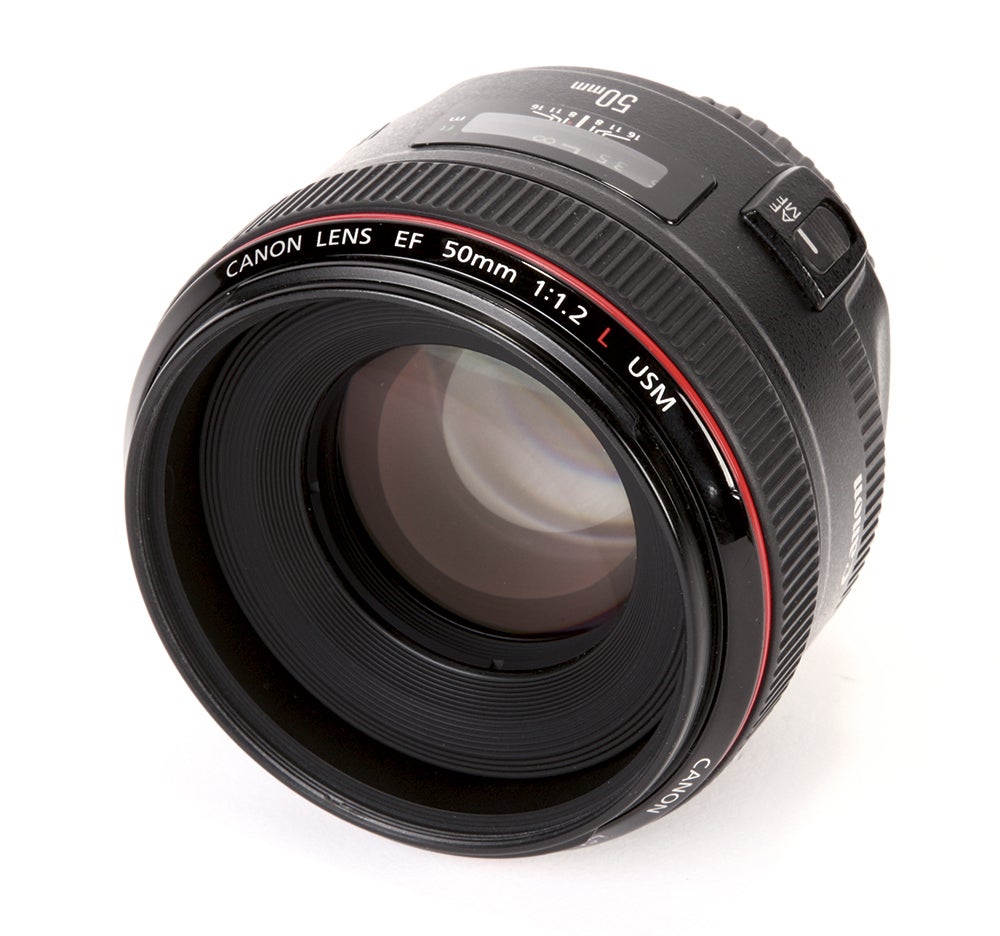 Website: www.canon.co.uk
Website: www.canon.co.uk
Price: £995
There’s no shortage of fast 50mm primes suitable for selective focusing. If you’re a Canon user working to a strict budget, you’ll want to look at the EF 50mm f/1.8 STM (£97), or the faster but older EF 50mm f/1.4 USM (£269).
The EF 50mm f/1.2L USM we’re looking at here is one of the fastest lenses Canon produces, alongside the manufacturer’s other current f/1.2 lens – the 85mm f/1.2L II USM. From f/1.2 to f/2.8, no other Canon 50mm lens is as sharp as this EF 50mm f/1.2L USM at respective apertures, and its eight-blade aperture contributes towards a very attractive bokeh in out-of-focus areas. To give you an idea of just how shallow the depth of field is at f/1.2, eyelashes can appear pin-sharp where other facial features can appear blurred when shooting a close-up portrait.
One advantage this lens has over others is its ring-type USM (Ultrasonic Motor) that uses ultrasonic-frequency vibrations to drive autofocus with near-silent operation. It acquires focus accurately at wide apertures, but does suffer from focus shift at smaller apertures. However, it’s very popular with fast-paced portrait and wedding photographers who need to acquire focus in a split second and can’t afford to waste time focusing manually. It’s also popular with action and sports photographers who’d like to create a fast drop-off in focus when working within closer distances of their subject.
The hefty price tag is the giveaway that it’s designed for professionals, but for one-off use or those who’d like to experiment with selective focus using a shorter focal-length lens it’s a particularly attractive option when you consider it can be hired from as little as £27 per day.

Canon’s EF 50mm f/1.2L USM is famed for its dreamy-looking bokeh effects
Lensbaby lenses
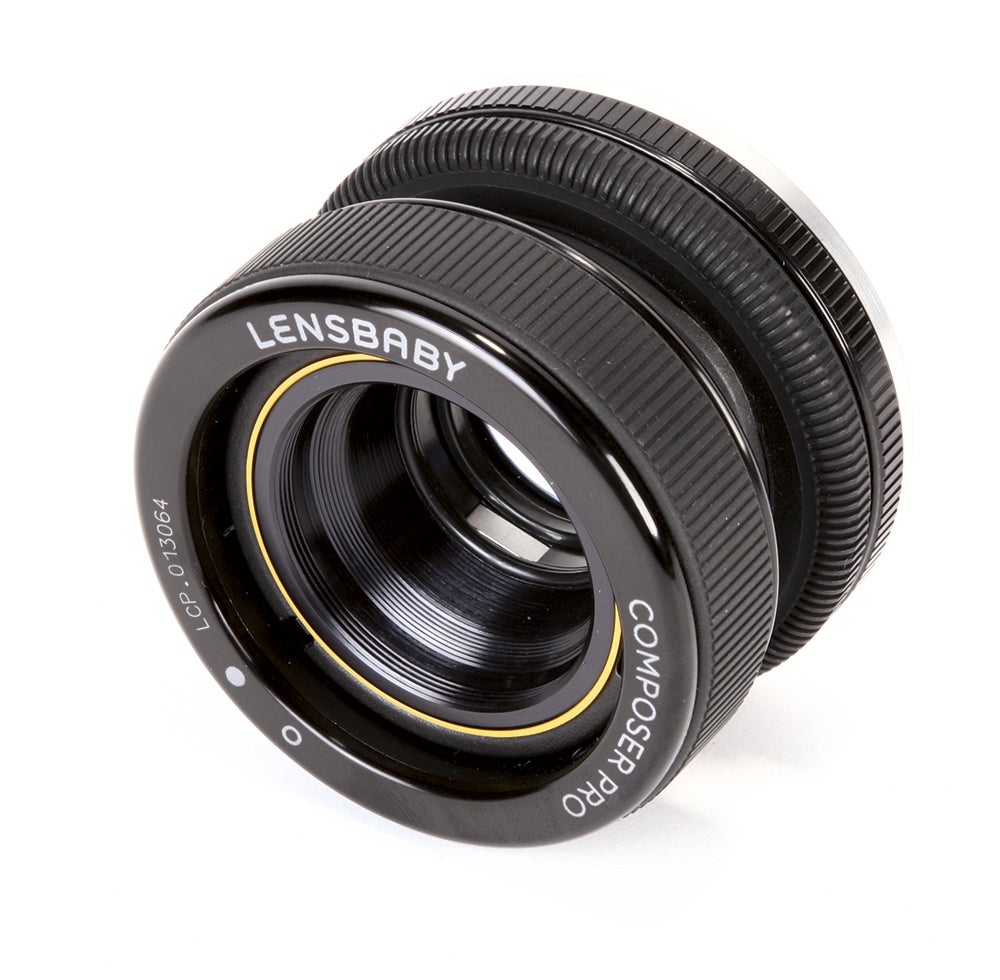 Website: www.lensbaby.com
Website: www.lensbaby.com
Price: £59-£349
Lensbaby is a company that has long made a virtue of using technically flawed optics for selective focus. Its simplest is the Spark – a single-element uncoated glass lens, mounted in a plastic bellows that can be manipulated to move a small area of sharp focus around the frame, blurring everything else.
Moving up the range, its Sweet optics use the same principle of having a central sweet spot surrounded by extreme blur due to optical aberrations. Its Edge optics are more conventionally corrected, and designed to be used as tilt lenses. Finally, its Twist 60 is a Petzval-type lens for full-frame cameras that gives characteristic ‘swirly bokeh’. These are all available as interchangeable optics that fit into its Composer Pro unit, which combines a ball-and-socket joint for tilting the lens with a manual focusing ring.
Thank you to these people, for lending us the following equipment:
Grays of Westminster: Nikon 105mm f/2D AF DC
Hire a Camera: Canon TSE 90mm
Leica Gallery: Leica Noctilux-M 50mm f/0.95





